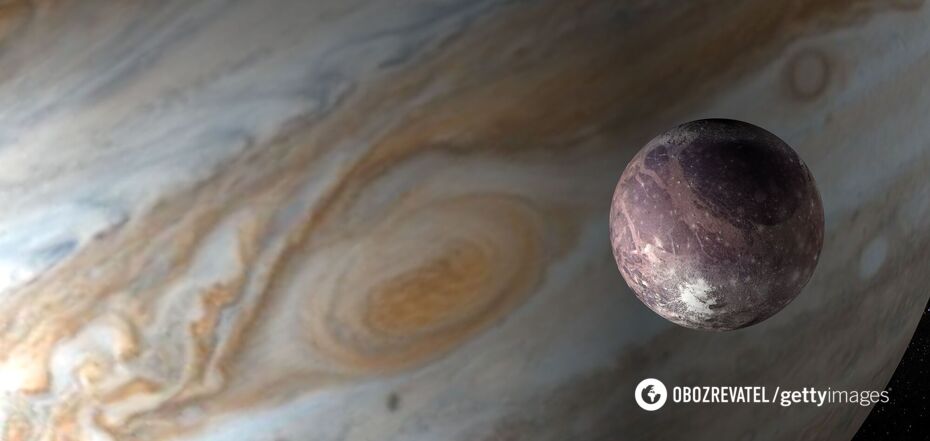News
Organic elements discovered on another object in the solar system - NASA
NASA's Juno mission has discovered mineral salts and organic compounds on the surface of Jupiter's moon Ganymede. This discovery will help scientists better understand the origin of the satellite and its ocean.
This is stated in an article published in the journal Nature Astronomy. The data was obtained using the Jovian InfraRed Auroral Mapper (JIRAM) spectrometer, which is equipped with Juno.
Ganymede is the largest satellite in our solar system, more massive than the planet Mercury. It has long been of interest to scientists. In particular, due to its huge internal ocean, which is hidden under the icy surface.
Previous observations have already hinted that Ganymede might have salts and organic matter, but the data was not reliable enough to draw a definitive conclusion.
Now Juno has provided just such data. The information was collected on June 7, 2021, when the spacecraft flew over Ganymede at a minimum altitude of 1046 km. During this flyby, JIRAM obtained infrared images and spectra that show how materials reflect light. This allows us to find out what kind of materials are observed on the surface.
The scientists were able to detect and analyze the unique spectral features of the non-water-ice materials. They found hydrated sodium chloride, ammonium chloride, sodium bicarbonate, and possibly aliphatic aldehydes.
Scientists believe that the presence of ammonium salts may be an indication that during its formation Ganymede could have accumulated materials cold enough to condense ammonia.
At the same time, carbonate salts may be the remnants of carbon dioxide-rich ice.
Previously, scientists have modeled Ganymede's magnetic field and determined that it is capable of protecting part of the satellite from being bombarded by energetic electrons and heavy ions created by Jupiter's magnetic field. Such bombardment can be devastating to salts and organics.
It was where Ganymede's magnetic field had the strongest impact that the largest amount of salts and organic matter was found.
This, according to the scientists, means that they are observing "remnants of a deep-sea ocean brine" that managed to reach Ganymede's surface.
Mineral salts alone are important for understanding Ganymede's geology and history, but finding organic matter is a different story. Organic molecules on the surface may indicate that Ganymede's underground oceans may be inhabited.
The organic compounds in question in the study are carbon-based molecules that are the basis for life, just like on Earth.
The latest findings could expand scientists' understanding of Ganymede's origins and ocean composition.
Juno has been living in Jupiter's orbit since 2016 and is currently on a mission that involves close encounters with some of the giant planet's largest moons. As part of this mission, in October 2023, the spacecraft made a close flyby of Io, one of Jupiter's volcanic moons.
Earlier, OBOZ.UA reported that molecules necessary for life were found in the water on a dwarf planet of the Solar System.
Subscribe to OBOZ.UA channels in Telegram and Viber to keep up with the latest events.



























